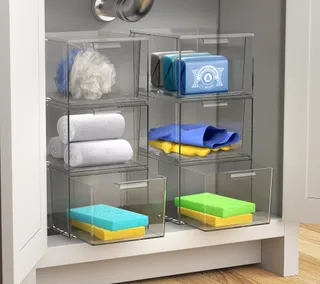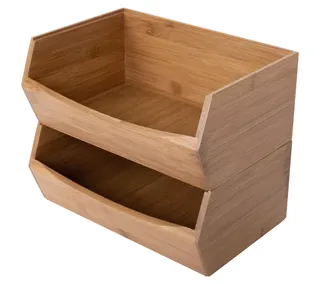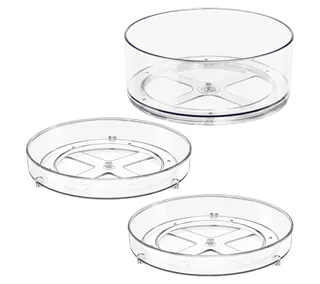How to organize a galley-shaped kitchen – 5 tricks to make this small layout work
Keep even the smallest of galley kitchens neat with these 5 expert tricks


Galley kitchens offer unique challenges when creating a well-organized, functional space. Not only are they smaller than most other layouts, making storage space limited, but galley kitchen ideas usually offer fewer appliance layout options, too.
Rather than letting this get in the way of efficient kitchen organization, however, professional organizers have worked hard to perfect the art of organizing galley-shaped kitchens and to take advantage of the close quarters.
Here, they share the five secrets to organizing a galley-shaped kitchen and explain how they help to make the most of limited kitchen storage.
How to organize a galley-shaped kitchen
Perfecting kitchen organization is one of the best ways to avoid common galley kitchen layout mistakes. This makes the kitchen more enjoyable to work in while making cooking easier – it's a win-win that is more than worth the time investment.
1. Set up zones
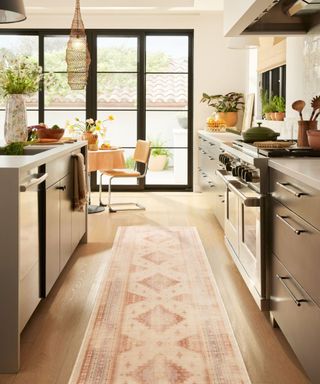
One of the best ways to organize and perfect your galley kitchen ideas is to set up zones, begins Amy Berryhill, professional home organizer and owner of Spiffy Chicks.
‘We like to set up kitchens in “zones” and this is particularly important in a galley kitchen so everyone isn’t in each other’s way,’ she says. ‘For example, you can have a “food prep” zone with your mixing bowls, strainers, measuring spoons, etc., and another zone for cooking supplies like pots and pans. A third zone can be clean-up and food storage.’
Assigning zones will help you find everything you need quickly while also making it possible for multiple people to work together in the space at the same time – even when floor space is limited.
2. Establish a clear work zone
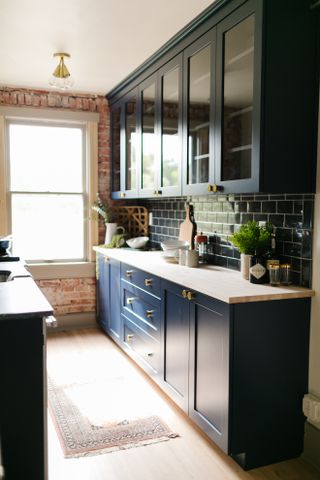
When working through these zones, it is important to set up a space that is completely free from clutter and storage so you have space to do the bulk of your work, Star Hansen, a professional home organizer, and clutter whisperer, continues:
‘Having a clear, open workspace is vital to making your kitchen a functional space. This is your area for food prep and any other kitchen-related activities that require counter space. Set the boundary with everyone in the home that this area is meant to stay clear and empty at all times. Or fill the space with a large cutting board when you’re not using it to deter people from dumping dishes or paperwork here.
‘Creating a clear work zone will enhance your enjoyment of your kitchen and greatly reduce your stress when you are ready to cook,’ she assures.
3. Look to other storage spots

Although it is more practical to keep all of your kitchen and food-related items in the kitchen itself, sometimes, small kitchen storage doesn’t stretch to our needs. For this reason, Cori McDougald, professional home organizer and founder of Meat and Potatoes Organizing, looks elsewhere in the home for spare storage:
‘Although this may seem a bit counterintuitive when working with a smaller-sized kitchen, galley kitchen, or a kitchen with limited storage space, I first like to optimize other key storage areas in the home. The reason I like this method is because we will only want to be storing kitchen items we use daily and weekly, in the actual kitchen. All other items being used monthly or seasonally are to be stored in a key storage area of the home.
‘You’ll first want to pull all items out of cabinets and drawers to make sure there is nothing that you want to get rid of or donate. Then, you’ll want to set up distinct areas for plates, bowls, cups, mug storage, silverware, pantry food, and kitchen appliances used frequently. You may also want a small baking and cooking section for sheet pans and frequently used pots and pans.
‘Everything else we will store in another storage area of the home. You’ll be surprised at how much easier your kitchen is to manage with much fewer items. Getting down to the basics feels so good, especially in kitchen spaces! It often sparks more interest in cooking, making the daily task much more enjoyable.’
4. Use storage that maximizes cabinets
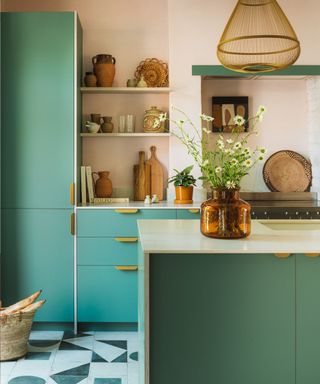
If you want to maximize kitchen storage without new cabinets, you will want to prioritize your home organizing pieces, says Amy Berryhill, professional home organizer. Using stackable storage units such as drawers and using turntables to make back corners more accessible will make the most of every inch of your existing cabinets, helping you to fit more in, she says.
‘Don’t overlook the inside of cabinet doors for storage opportunities, either,’ she adds. Whether you add hooks or mount storage baskets, there are plenty of opportunities to add in spots for smaller, frequently used items that you need easy access to.
5. Prioritize practicality
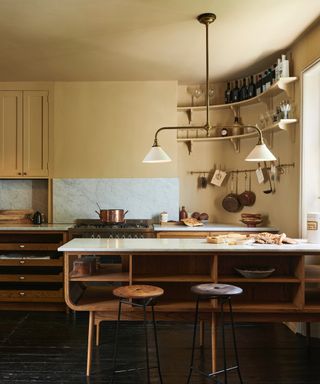
We all aspire to follow the most aesthetic organizing tricks we see on the front page of Pinterest or TikTok, but in small practical spaces, we need practical solutions, reminds Star Hansen, a professional home organizer:
‘We all have an idea of what an organized kitchen looks like. Often, we imagine a picturesque bowl of fruit or some artwork leaning against the backsplash. But with a small kitchen, you want to turn this space into a functional powerhouse. Instead of adding small collectibles to make the space beautiful, put your most functional systems out where you can access them with ease.
‘You can even dive into the French Country style and make all your systems visible and beautiful by removing your cabinet doors and embracing a more maximalist visual. If you want to add some beauty and décor, try painting your walls or cabinets an interesting color.’
FAQs
What are the disadvantages of a galley kitchen?
Galley kitchens are good layouts if you are short on space, however, their compact sizes usually mean they suffer from a lack of storage. They can also be claustrophobic, making it hard for more than two people to use them at once.
How to layout a galley kitchen?
When designing a galley kitchen, and exploring, what is the best layout for a galley kitchen, split your appliances up so that they are on both sides of the kitchen, trying your best to maintain the golden triangle formation. You might have your stove on one side of the kitchen, and your fridge and sink on the other to maintain a productive workflow.
Organizing a galley-shaped kitchen might not be as easy as organizing a U-shaped kitchen, but it is certainly doable with a little imagination and some trial and error.
Sign up to the Homes & Gardens newsletter
Design expertise in your inbox – from inspiring decorating ideas and beautiful celebrity homes to practical gardening advice and shopping round-ups.

Chiana has been at Homes & Gardens for two years and is our resident 'queen' of non-toxic living. She spends most of her time producing content for the Solved section of the website, helping readers get the most out of their homes through clever decluttering, cleaning, and tidying tips. She was named one of Fixr's top home improvement journalists in 2024.
-
 5 low-energy and useful tasks to try instead of doom-scrolling – this brain hack will break bad habits
5 low-energy and useful tasks to try instead of doom-scrolling – this brain hack will break bad habitsExperts urge you to try it for your wellbeing
By Chiana Dickson Published
-
 Want the best home-grown tomatoes ever? Plant them with marigolds, says our grow-your-own expert, and discover why these two are a dream combination
Want the best home-grown tomatoes ever? Plant them with marigolds, says our grow-your-own expert, and discover why these two are a dream combinationYour tomato plants will be pest-free and covered in fruits
By Drew Swainston Published
-
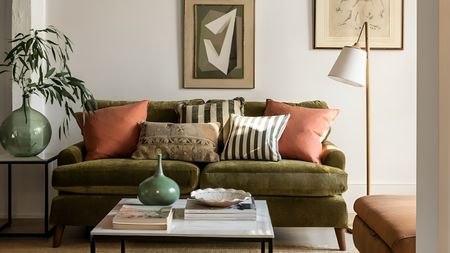 5 low-energy and useful tasks to try instead of doom-scrolling – this brain hack will break bad habits
5 low-energy and useful tasks to try instead of doom-scrolling – this brain hack will break bad habitsExperts urge you to try it for your wellbeing
By Chiana Dickson Published
-
 How to store a comforter or duvet properly over the warmer months – pros say 'breathable is the buzzword'
How to store a comforter or duvet properly over the warmer months – pros say 'breathable is the buzzword'Clean, air out, fold and roll your way to a fresh and fluffy duvet
By Ottilie Blackhall Published
-
 This tiered Joseph Joseph dish rack solved the constant sink-side traffic jam in my kitchen
This tiered Joseph Joseph dish rack solved the constant sink-side traffic jam in my kitchenI wish I’d swapped to it sooner
By Punteha van Terheyden Published
-
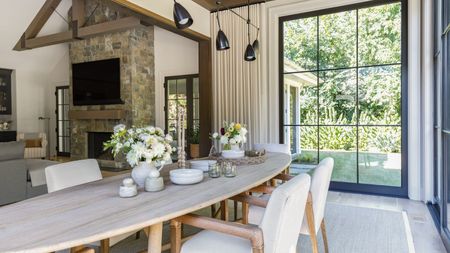 ‘An important tenet in staying organized’ – 6 easy habits for a more minimalist and streamlined home
‘An important tenet in staying organized’ – 6 easy habits for a more minimalist and streamlined homeWorking on these organizational habits will make your home more manageable
By Chiana Dickson Published
-
 9 things to organize in April 2025 to prepare your home for a season of socializing and warmer weather ahead
9 things to organize in April 2025 to prepare your home for a season of socializing and warmer weather aheadGet sorted now for easier spring and summer get-togethers
By Chiana Dickson Published
-
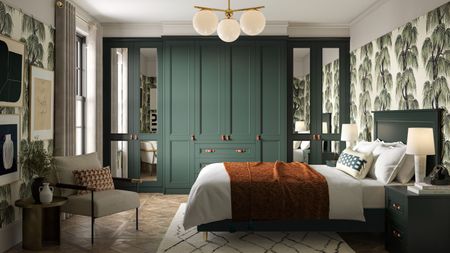 6 warning signs it is time to quickly reorganize your closet and make stressful mornings easy to navigate again
6 warning signs it is time to quickly reorganize your closet and make stressful mornings easy to navigate againIt is not a ‘once-and-done’ task, experts reveal
By Chiana Dickson Published
-
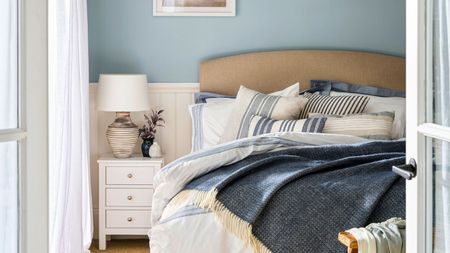 5 bad habits to ditch at home that will save you wasted time and energy on unnecessary chores
5 bad habits to ditch at home that will save you wasted time and energy on unnecessary choresYou’ll have more free time than ever
By Chiana Dickson Published
-
 I’ve lived in a small storage-less home for two years – these 5 storage saviors have been transformative
I’ve lived in a small storage-less home for two years – these 5 storage saviors have been transformativeThey have outlasted every other attempt at corralling clutter
By Chiana Dickson Published
